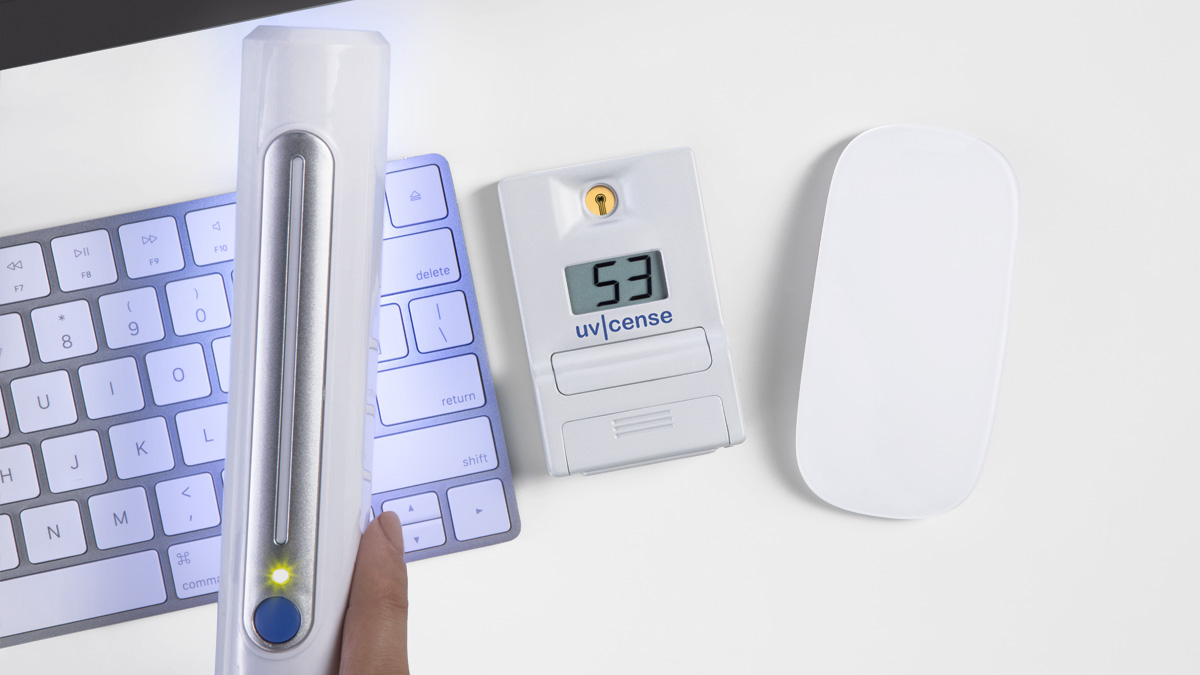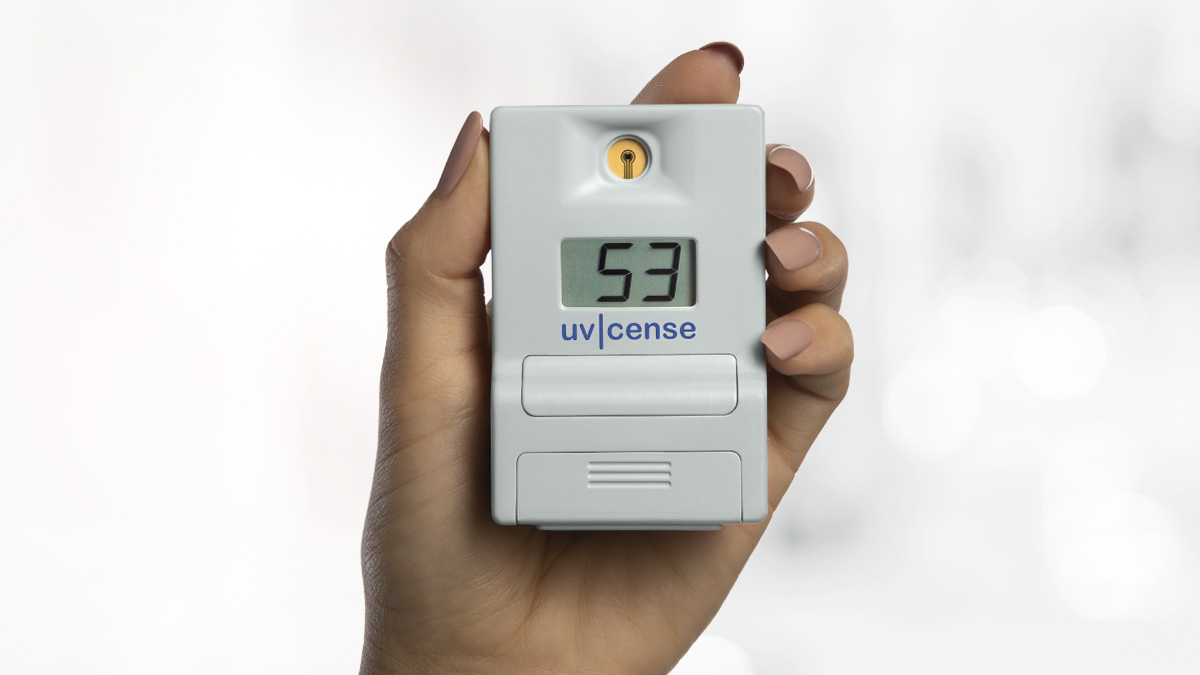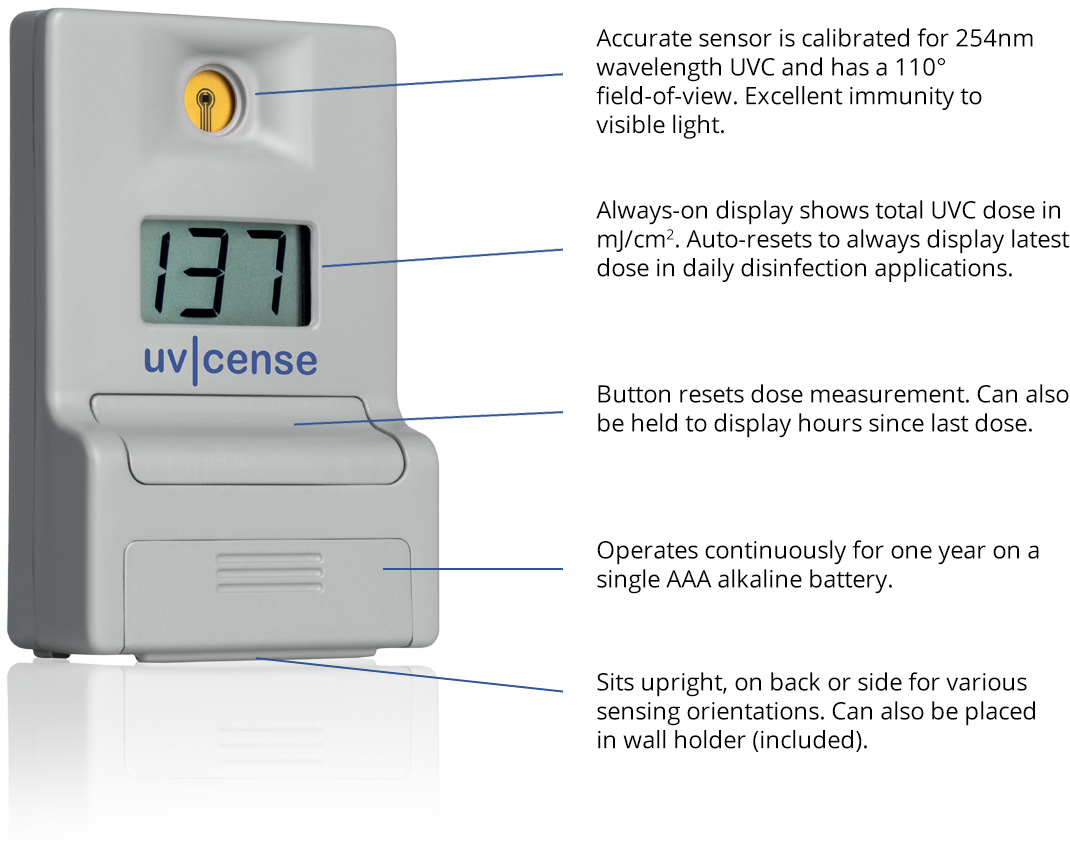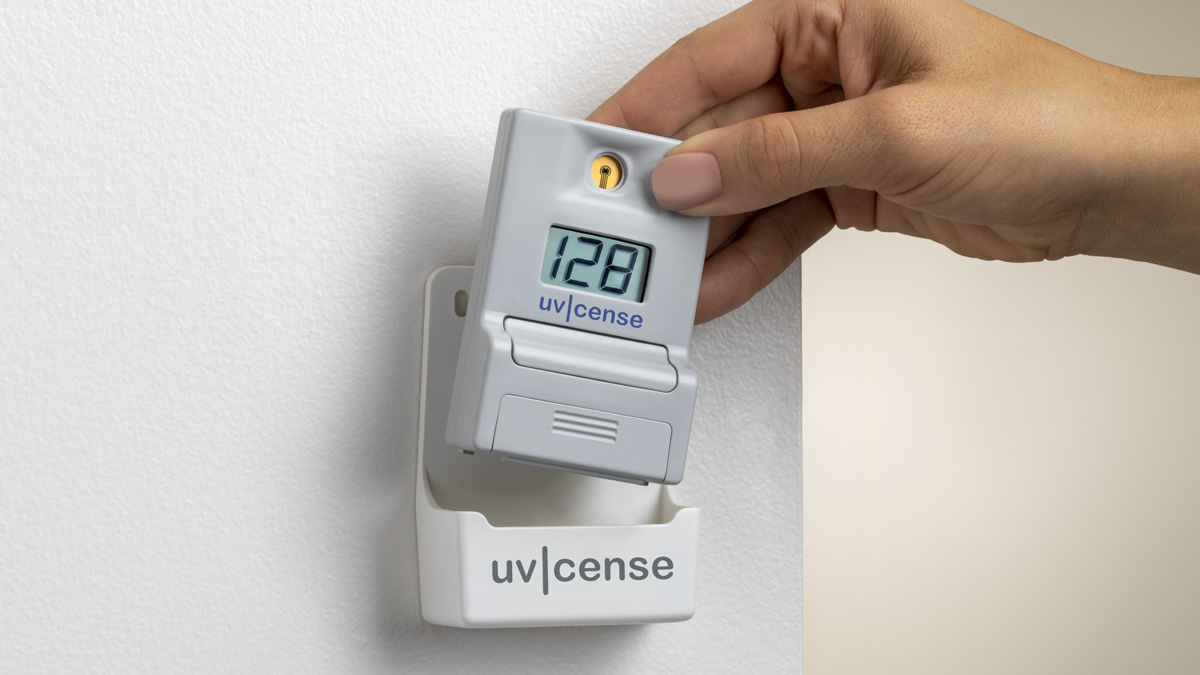
Is Your UV Sanitizer Really Disinfecting?
The UVCense dosimeter measures the UVC dose delivered by your sanitizer so you can rest assured that you’re protected from pathogens.

How UVC Disinfection Works
Learn More About UVC Disinfection
Click below to download UVCense white papers and learn more details about UVC:
Lab-grade Performance at an Affordable Price
Finally, you can purchase a precision UVC dosimeter without spending thousands of dollars. For only $250, the handheld UVCense dosimeter includes a wide field-of-view and excellent ambient light rejection to ensure accurate dose measurement.

Lab-grade Performance at an Affordable Price
Finally, you can now purchase a precision UVC dosimeter without spending thousands of dollars. For only $250, the handheld UVCense dosimeter includes a wide field-of-view and excellent ambient light rejection to ensure accurate dose measurement.
Product Features
The UVCense dosimeter is a portable, full-featured instrument that provides highly-accurate UVC measurements. For complete technical information please refer to our product specifications (patents pending).

UVCense in Commercial Places
UVCense dosimeters are the perfect complement to professional UVC disinfecting equipment. A Bluetooth® enabled dosimeter is available for healthcare and commercial applications, permitting a direct connection to UVC disinfection equipment and logging of dose measurements. For permanent applications, our dosimeters snap into wall holders, enabling easy dose verification.
UVCense dosimeters are ideal in our medical office setting. They are sturdy, reliable, compact (fit into most of the smaller UV sterilizing units), extremely easy to use and read, and eliminate the insecurity of not knowing the germicidal efficacy of our UV sterilization devices. I highly recommend them as an integral part of any infection control effort.

UVCense in Commercial Places
UVCense dosimeters are the perfect complement to professional UVC disinfecting equipment. A Bluetooth® enabled dosimeter is available for healthcare and commercial applications, permitting a direct connection to UVC disinfection equipment and logging of dose measurements. For permanent applications, our dosimeters snap into wall holders, enabling easy dose verification.
UVCense dosimeters are ideal in our medical office setting. They are sturdy, reliable, compact (fit into most of the smaller UV sterilizing units), extremely easy to use and read, and eliminate the insecurity of not knowing the germicidal efficacy of our UV sterilization devices. I highly recommend them as an integral part of any infection control effort.
Frequently Asked Questions
COVID-19 is an infectious disease caused by a new coronavirus. Because viruses are not living cells, we generally refer to neutralization — eliminating the virus’ ability to reproduce. UVC dose levels required to neutralize this new coronavirus have not yet been published; however, it is believed to be similar to other coronaviruses that have been shown to be neutralized by UVC.
UVC neutralization of pathogens is probabilistic in nature, and sanitation professionals generally aim for at least 99.99% neutralization. Most pathogens (including coronaviruses) can be disinfected to this level with a 254nm UVC dose of 50mJ/cm2 (a reading of ‘50’ on the UVCense dosimeter display).
The required exposure time depends on several factors: 1) UVC lamp power; 2) distance from the lamp; and 3) the angle at which the UVC light rays hit the surface. Most handheld wands produce little UVC power and require close exposure of surfaces for up to a minute to reach a 50mJ/cm2 dose. The only reliable way to know the required exposure duration is by using an accurate UVC dosimeter.
Yes, face masks can be disinfected by UVC. However, because masks and fabrics have microscopic cavities that are not directly exposed to the UVC light, much higher dose levels are required. Mask disinfection usually involves high-power lamps and may require UVC exposure exceeding 1000mJ/cm2 to adequately disinfect.
UVC ultraviolet light is well outside the visible light spectrum so it is invisible. However, mercury vapor UVC lamps also produce a small amount of visible blue light, but this light is not in the UVC range. Beware of some LED disinfection products that use blue LEDs (not expensive UVC LEDs). Such lamps produce a satisfying blue glow but no UVC light.
In high doses, UVC light can be harmful. The ISO 15858 safety standard recommends that humans should not be exposed to more than 6mJ/cm2 UVC per day. Exposure above this level can produce skin irritation and eye damage (including cataracts from very high doses).
Just as plastics and fabrics can deteriorate from long-term exposure to sunlight (which includes UVA and UVB ultraviolet light), long-term exposure to UVC can also produce damage. However, even daily exposure to 50mJ/cm2 doses will not produce significant damage to most materials.
Ozone is a highly reactive gas composed of three oxygen atoms instead of two oxygen atoms as in the air we breathe. Ozone is an effective disinfectant, but the same chemical properties that allow ozone to react with organic material outside the body give it the ability to react with similar organic material that makes up the body. When inhaled, ozone can damage the lungs. Relatively low amounts can cause chest pain, coughing, shortness of breath and throat irritation. Ozone may also worsen chronic respiratory diseases such as asthma and compromise the ability of the body to fight respiratory infections. Although not a health risk, ozone is also known to deteriorate some plastics and fabrics.
About UVCense
UVCense is a high-tech company focused on the development of UVC disinfection products. Our mission is to reduce the spread of various types of pathogens including coronaviruses. Our team of creative and driven employees is located in historic downtown Mooresville, North Carolina. All UVCense products are designed and manufactured in the USA.
Contact Us
Please feel free to contact us at info@uvcense.com or by submitting the form below.